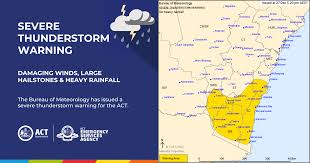Understanding Severe Thunderstorm Warnings: What You Need to Know

Introduction
Severe thunderstorm warnings are critical alerts issued by meteorological authorities that indicate an approaching storm capable of producing dangerous conditions including heavy rainfall, strong winds, and hail. These warnings are especially important as they provide timely information that could save lives and property. With climate change intensifying weather patterns, understanding these warnings has become increasingly relevant.
The Importance of Severe Thunderstorm Warnings
On October 2, 2023, residents across Ontario experienced severe weather, prompting officials to issue multiple severe thunderstorm warnings. This event illustrated the necessity for public awareness and adherence to safety protocols during such storms. According to Environment and Climate Change Canada, the main threats during severe thunderstorms include:
- High winds: Winds of 90 km/h or more can cause significant damage to structures, trees, and power lines.
- Hail: Hailstones can range in size and lead to severe property damage.
- Heavy rainfall: Intense rainfall can lead to flash flooding, particularly in urban areas.
Current Events
The recent storm activity in Southern Ontario resulted in widespread reports of structural damage and power outages affecting thousands of homes. Emergency services responded to multiple incidents, showcasing the urgency of adhering to warnings. Meteorologists had forecasted severe thunderstorms days in advance, which allowed communities the opportunity to prepare. In response to these warnings, local governments advised residents to secure loose objects and stay informed through News and Weather apps.
Conclusion
Understanding and reacting to severe thunderstorm warnings is vital for safety during storm events. As climate change continues to enhance the unpredictability of weather patterns, it is essential for individuals to stay informed and prepared. Investing in weather alert systems and following local advisories can help mitigate the risks associated with severe weather. By prioritizing safety and being proactive during severe thunderstorm warnings, communities can protect themselves and minimize damage to property and infrastructure.









